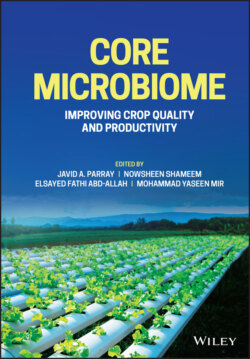Читать книгу Core Microbiome - Группа авторов - Страница 52
3.5.2 Proteomics
ОглавлениеIn studying the expression of plant stress response, protein profiling is important as it directly reflects phenotypic traits. It was also helpful in determining the physiological and metabolic pathway and plant–microbe protein interaction. Comparative analysis of non-stressed stress and target proteins associated with plant–microbe interaction can help identify target proteins and networks (Karthik et al. 2014). The differences in the metabolic pathway among microbes make them more responsive toward stress conditions. The meta-proteome analysis and resolution technique are relatively difficult. The extraction and analysis of meta-proteome data could provide significant output and give a better response among organisms toward stresses. The haloarchea and halobacteria are getting much attention due to their ability to thrive under high salinity stress. Under in situ conditions, culturing of these organisms is used to persuade effective metabolites to impart tolerance against stress. GC-MS/MS protein profiling was used for Araucaria angustifolia at the embryogenic stage to figure out large-scale protein identification against cold-tolerance. About 106 differentially expressed protein data were collected from the blocked type and stress response varieties (Dos Santos et al. 2016). The ginsenosides protein samples were taken from hairy roots of ginseng and proteome analysis predicted that about 20% of selected proteins originated from energy metabolism and stress response (Nam et al. 2005). Milky sap isolated from C. majus L. produced different types of protein signals such as a nucleic acid-binding protein that could be favorable under stress conditions (Nawrot et al. 2013). Moreover, aldolase, G3P dehydrogenase, and enolase were also identified as isotypes during the analysis (Nam et al. 2005).
